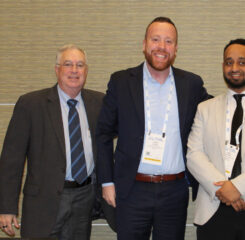Whether as a toddler in the “terrible twos,” an eighth-grader giving an eyeroll, or an octogenarian eschewing community living—we love to assert our independence.
LeadingAge members likely witness this every day, as older adults delay moves into residential care communities. Data bears this out. Of new move-ins to assisted living, half are over 85 years old; 31% are between 75 and 84; 13% are between 65 and 74, and 6% are younger than 65 years old.
The LeadingAge team that conducted the foundational research for Opening Doors to Aging Services also heard it loud and clear. We conducted a national survey of U.S. adults over age 18 exploring public perceptions of our field. Respondents listed independence—and the health indicators that support it—above all else when asked what was important to them (scoring well above social engagement and community factors):
- Good mental health 74%
- Good physical health 71%
- Independence 69%
- Financial health and security 67%
- To live in your own home 67%
This finding led to a core strategy of the Opening Doors to Aging Services initiative: emphasizing how members’ services support independence and health. The guidance suggests showing how extra help from aging services providers can mean greater independence and the ability to continue to do things that are important to us.
Conversely, avoid framing communications around the needs and frailty of older adults: spotlight their value, dignity, and ongoing contribution.
LeadingAge developed the Opening Doors resources to guide members in raising awareness and improving perceptions of our field. Those objectives will boost both general marketing and employee recruitment efforts.
We’ve also created tools to boost workforce recruiting. Visit Opening Doors to the Aging Services Workforce to find strategies, messages, and tips for writing effective employment communications.
Long past the parades and the pop of the bottle rockets, we recommend staying focused on independence when assessing what Americans want as they grow older.

 Shutdown Week Three: Impact of Ongoing Closure on Affordable Housing
Shutdown Week Three: Impact of Ongoing Closure on Affordable Housing Colleagues on the Move, December 17, 2025
Colleagues on the Move, December 17, 2025


